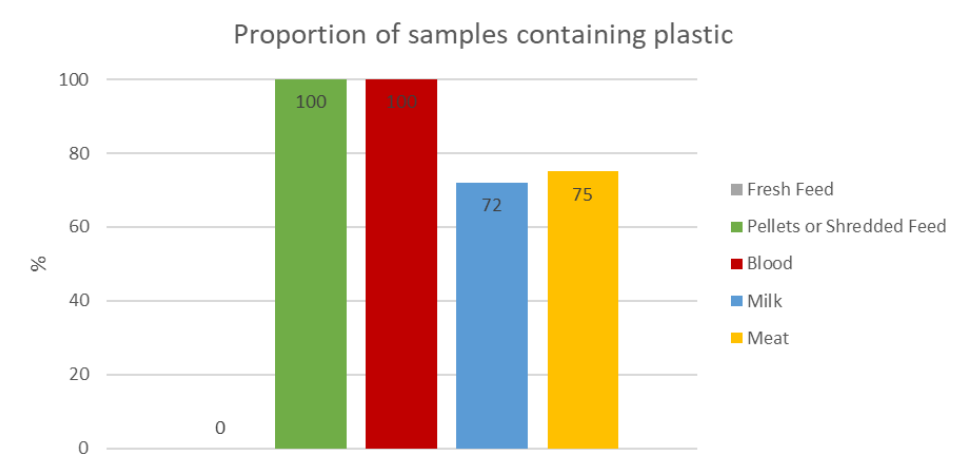A pilot study conducted by researchers at Vrije Universiteit Amsterdam has found that nearly 80% of meat and dairy products from farm animals tested contained plastic particles.
The researchers found that particles of several types of plastic were present in the blood of both pigs and cows; in cows’ milk both, from the farms and from packaged milk from the supermarket; in farm-animal feed pellets; and in packaged meat samples from three farms and from the supermarket.
The study, commissioned by the Plastic Soup Foundation “raises serious concerns about the contamination of our food chain with microplastics” according to the foundation’s director, Maria Westerbos.
“It is also clear that farmers are not responsible for this,” she said.
“It seems that – at least part of the – former food products, including from supermarkets, are processed into livestock feed with packaging and all. This is not only detrimental to animal welfare, but perhaps also to ourselves. Most likely, almost every steak and burger contains small pieces of plastic.”
The study found that all 12 samples of feed pellets and shredded feed were found to contain plastic, while no plastic particles were detected in fresh feed, however.
Seven of the eight beef samples tested were found to contain plastic particles, while five of the eight pork samples contained at least one type of plastic.
Plastic was also found in 18 of the 25 milk samples tested.
While the study did not investigate the origin of the particles detected in the blood streams of pigs and cows, it did produce evidence that the animals absorbed these plastic particles into their bloodstreams.

In fact, all Dutch livestock animals that were investigated – 12 cows and 12 pigs – had multiple, and at least three types of plastic particles in their blood.
This indicates that the particles are either small enough to be absorbed via the lung pathway and/or swallowed and absorbed into the blood stream via the gut.
Chewing food may further reduce size of particles swallowed which increases the chance of particle absorption, the research found.
Key highlights
- 80% of all samples combined, contained detectable amounts of at least one type of plastic.
- None of the fresh feed samples contained detectable amounts.
- 100% of the pellets and shredded feed samples contained detectable amounts of at least one type.
- 100% of the cow and pig blood samples contained detectable amounts of at least one type.
- 72% of the milk samples of any type contained detectable amounts of at least one type of plastic.
- 75% of the meat samples of any type contained detectable amounts of at least one type.
Plastic particles were present in the majority (75%) of the beef and pork samples investigated in the study.
Therefore, humans may potentially be exposed to particles by eating beef or pork, and less likely via milk.
While the pilot study gave clear indications for plastic exposure of livestock and possibly humans, a larger number of samples would need to be analysed to draw more general conclusions and perform statistical analyses, for example, regarding the range of concentrations, frequency of detection, temporal and spatial variation in the concentrations, the researchers said.
This was beyond the scope of this pilot study, which was simply focussed on measuring exposure to plastic particles.
Based on the results described, no conclusions can be drawn regarding any potential health risks of these findings for the animals or for humans upon consumption of animal-derived products.

